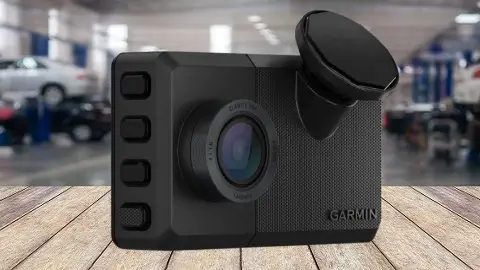Today, we’re diving deep into a comparison between two powerful dash cams from Garmin: the Garmin Dash Cam Live and the Garmin Dash Cam 67W. As daily users of both devices, we’ve discovered the ins and outs of these dash cams, testing every feature and understanding their real-life implications. Let’s get started.
Garmin Dash Cam Live vs 67W Side-by-Side:
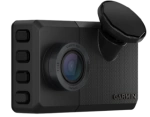 | 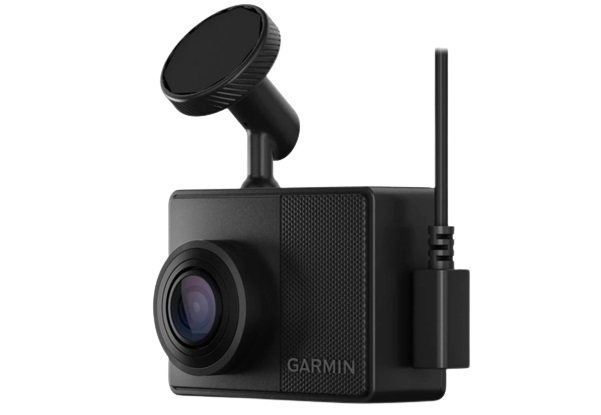 | |
|---|---|---|
| Garmin Dash Cam Live | Garmin Dash Cam 67W | |
| Resolution | 1440p up to 30 FPS | 1440p up to 60 FPS |
| View angle | 140° | 180° |
| Screen | color TFT LCD | color TFT LCD |
| Display size | 2.95" diag | 2.0" diag |
| Built-in Wi-Fi | Yes | Yes |
| Built-in GPS | Yes | Yes |
| Battery life | 30 mins | 30 mins |
| Memory | 16 GB microSD™ included (supports up to 512 GB, Class 10 or faster) | 16 GB microSD™ included (supports up to 512 GB, Class 10 or faster) |
| Price | Find on Amazon BHPhotoVideo.com | Find on Amazon |
Garmin Dash Cam Live
The Garmin Dash Cam Live stands out with its always-on LTE connection, offering remote access to live views and instant incident alerts – a feature that makes it feel like a robust security system for your vehicle. The 1440p HDR video combined with a 140° field of view ensures high-quality video capture, which can be controlled via a robust voice command system available in six languages. However, there is a minor drawback in that it lacks an integrated rear camera. Plus, to fully utilize the parking mode alerts, you’re required to keep the app open, which may be slightly inconvenient. Yet overall, the Dash Cam Live is a versatile and comprehensive dash cam solution, particularly for those seeking top-tier security features.
Pros
- High-definition 1440p HDR video with 140° field of view.
- Robust voice control feature supports six languages.
- Always-on LTE connection for live views and alerts.
- Parking guard feature for enhanced vehicle security.
- Easy setup and installation process.
Cons
- No integrated rear camera.
- Requires keeping app open for parking mode alerts.
Garmin Dash Cam 67W
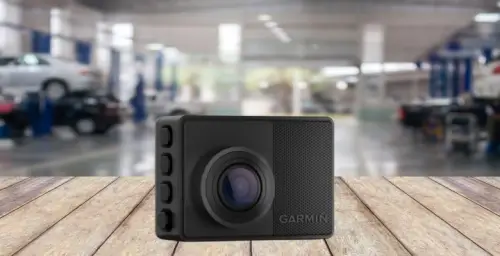 The Garmin Dash Cam 67W offers a superb balance of compact design and high performance. Its 180-degree field of view coupled with 1440p HDR video quality ensures crucial details are captured in a wide frame. The device makes hands-free operation a breeze with its voice control feature. Its Parking Guard feature, which automatically records and saves incident videos, offers peace of mind for vehicle safety. A couple of caveats do exist: customers have reported issues with phone connectivity, and remembering to command “save video” during incidents can be a bit demanding. Despite these minor issues, the Dash Cam 67W is an excellent choice for anyone seeking a reliable dash cam that provides high-quality video capture.
The Garmin Dash Cam 67W offers a superb balance of compact design and high performance. Its 180-degree field of view coupled with 1440p HDR video quality ensures crucial details are captured in a wide frame. The device makes hands-free operation a breeze with its voice control feature. Its Parking Guard feature, which automatically records and saves incident videos, offers peace of mind for vehicle safety. A couple of caveats do exist: customers have reported issues with phone connectivity, and remembering to command “save video” during incidents can be a bit demanding. Despite these minor issues, the Dash Cam 67W is an excellent choice for anyone seeking a reliable dash cam that provides high-quality video capture.
Pros
- Compact design with 180-degree field of view.
- Excellent 1440p HDR video quality.
- Convenient voice control for hands-free operation.
- Automatic recording and saving of incident videos.
- Parking Guard feature for vehicle safety.
Cons
- Issues reported with phone connectivity.
- Must remember to command “save video” during incidents.
Comparison of Key Features: Garmin Dash Cam Live vs 67W
Size & Design
The Dash Cam Live, with dimensions of 3.26 x 1.98 x 0.86 inch, is noticeably larger than the more pocket-friendly Dash Cam 67W, which measures 2.21 x 1.59 x 0.86 in. Both cams sport a sleek design, but the smaller 67W is more unobtrusive on your windshield.
Display
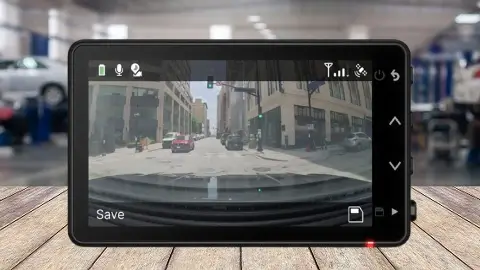
The Dash Cam Live boasts a larger display size of 2.95″ compared to the 2.0″ of the 67W. While both offer color displays, the Live’s TFT LCD offers a higher resolution (640 x 360 pixels) than the 67W’s QVGA (320 x 240 pixels). This difference is noticeable when you’re reviewing footage on the devices themselves.

Camera Features & Resolution
Both dash cams offer the same camera resolution of 1440p, which delivers crisp and clear footage. However, the Dash Cam 67W has an impressive field of view of 180 degrees compared to the Dash Cam Live’s 140 degrees, allowing it to capture a wider area.
One impressive aspect of the 67W is its frame rate – it can capture up to 60 frames per second, double the Live’s 30 FPS. This difference makes the 67W’s video smoother, particularly important during high-speed incidents.
Voice Control
A significant advantage of the Dash Cam Live is the inclusion of Voice Control. It’s a handy feature, enabling you to save videos, start/stop audio recording, take still pictures, and more using spoken commands. The 67W does not offer this feature, which is a downside for those seeking hands-free control.
Parking Mode & Alerts
Both dash cams have a Parking Guard feature that alerts you about detected incidents affecting your parked vehicle via the Garmin Drive app. A notable feature in the Dash Cam Live, unavailable in the 67W, is the always-on LTE connection. This feature, requiring an active subscription, lets you access a live view and share saved video anytime from the Garmin Drive smartphone app. This is a significant advantage if you wish to monitor your vehicle remotely.
Battery & Weight
Both devices have a rechargeable lithium-ion battery with a life of up to 30 minutes. As for the weight, the Dash Cam Live (109.7 g) is almost twice as heavy as the 67W (57.0 g), but this difference is hardly noticeable once installed on your windshield.
Installation & Set Up
In our experience, the set-up for both devices was straightforward. For the Dash Cam Live, installation took us around an hour, including routing the cable. The compact size of the 67W made its installation slightly easier.
Dash Cam Auto Sync
Both dash cams support the Dash Cam Auto Sync feature, enabling you to view video from up to four dash cams. This means you could equip multiple vehicles or various parts of a single vehicle with these cams and monitor all footage through the same app.
Connectivity Issues
One customer review pointed out connectivity issues with the Dash Cam 67W when trying to view or download videos on their iPhone 12 Pro Max. While we didn’t experience these issues, it’s something to consider if you’re an iPhone user.
Incident Detection & Alert System
In terms of incident detection, both dash cams are on par. They both feature a G-sensor for incident detection, which helps trigger automatic recording. As a safety enhancement, both devices offer camera-assisted features for forward collision warnings, lane departure warnings, and “Go” alerts, which can help improve your situational awareness while driving.
LTE Subscription Feature
The Dash Cam Live’s always-on LTE connection is a powerful feature not available in the Dash Cam 67W. For a $10/month subscription, you can access your dash cam remotely, receive parking mode alerts, and upload event videos to the cloud in real time. This provides a whole new level of vehicle security.
User Reviews: Dash Cam Live
The customers appreciated the sensitivity of the Dash Cam Live’s incident detection feature, albeit with some caveats. One downside is the lack of a rear camera, a gap that can be filled by buying a separate mini cam. But this solution doesn’t offer the same remote alert functionality unless within Wi-Fi range.
Also, using the parking mode effectively required keeping the app open in the background, which some may find inconvenient. Notwithstanding these minor issues, the overall sentiment was positive. Customers praised the camera’s power, security features, ease of installation, and real-time alerts.
User Reviews: Dash Cam 67W
While the reviews of the Dash Cam 67W also trended positive, there were a few points of dissatisfaction. Customers noted the necessity of remembering to command the camera to “save video” during an incident, or risk losing vital footage. The device only saves 15 seconds before and 15 seconds after the command is given.
Another pain point was a perceived issue with connecting the dash cam to a phone. Some customers had trouble viewing or downloading videos from their phone, which was not a problem we encountered during our use, but could be device or model-specific.
Additional Features
The Dash Cam Live offers a couple of unique features like Unidentified Driver Alerts and Incident Messaging, providing a higher level of security. The Vault compatibility ensures your videos are stored securely online, and this is a shared feature in both cams.
Durability
Both cams have proven to withstand harsh vehicle environments, including direct sunlight and hot interior temperatures. They’ve held up well during our rigorous testing period, functioning consistently even under challenging conditions.
Price & Value
Though the Dash Cam Live comes with a higher price tag, the additional features justify the cost, especially for those seeking comprehensive security coverage. The Dash Cam 67W, while lacking some of the Live’s bells and whistles, still provides excellent value with its high-resolution video, wide field of view, and impressive frame rate.
Conclusion
Our personal experience with both the Garmin Dash Cam Live and the Dash Cam 67W has shown that each device offers its unique set of advantages. The Dash Cam Live is a robust and comprehensive solution for those seeking remote access and instant incident alerts, while the Dash Cam 67W’s wide field of view and smooth video playback make it an excellent choice for capturing high-quality video footage. Depending on your specific needs and budget, either of these dash cams could serve as a reliable co-pilot on your journeys.
Related Comparisons:
- Nextbase 522GW vs Garmin 67W Side by Side
- Garmin 67w vs Nextbase 622GW Comparison

